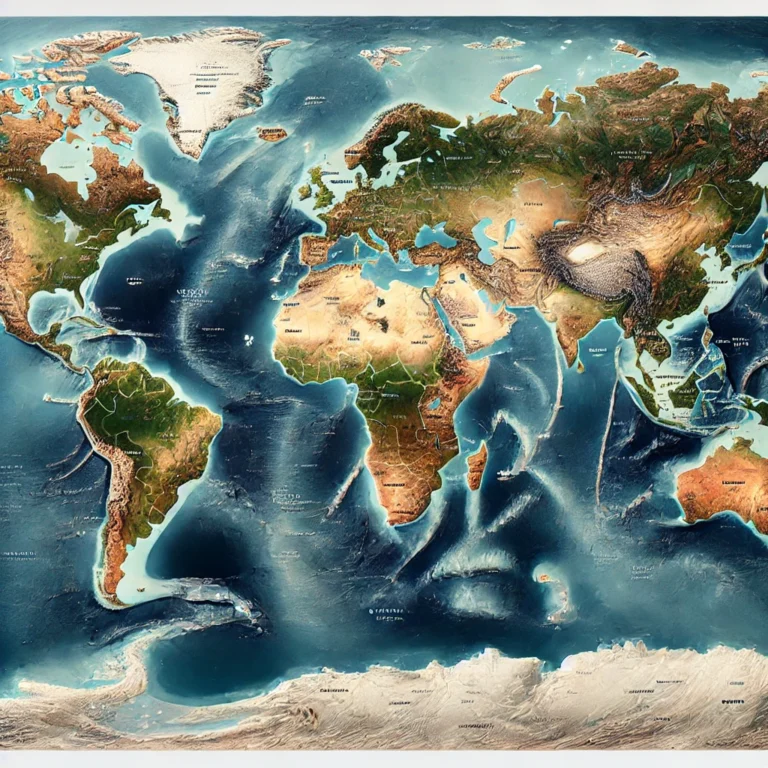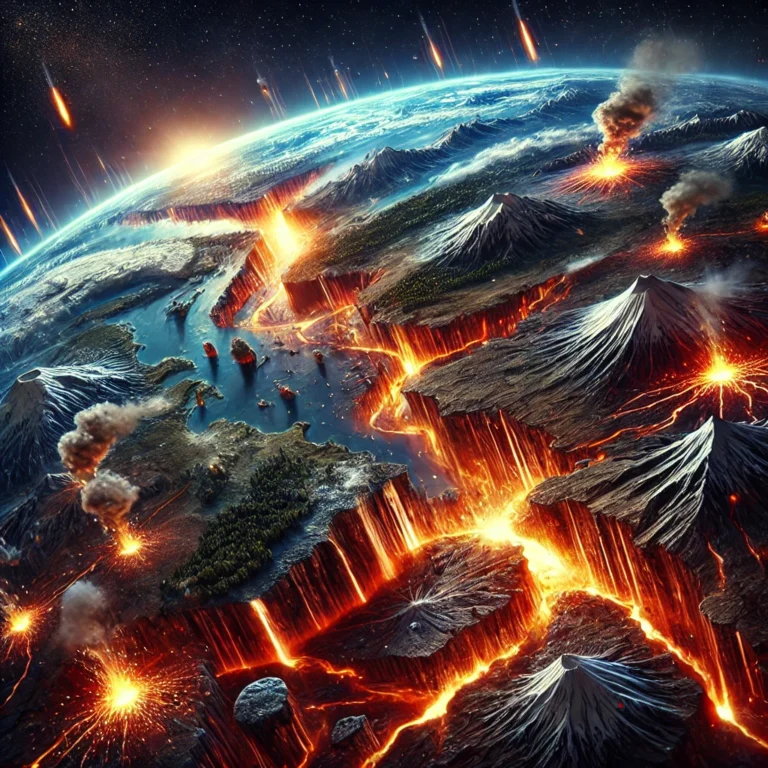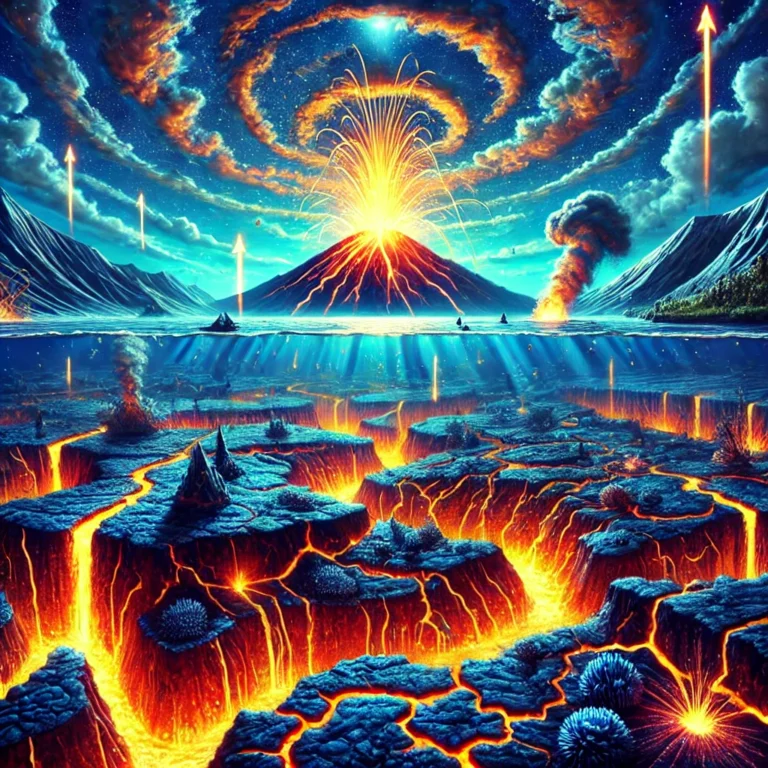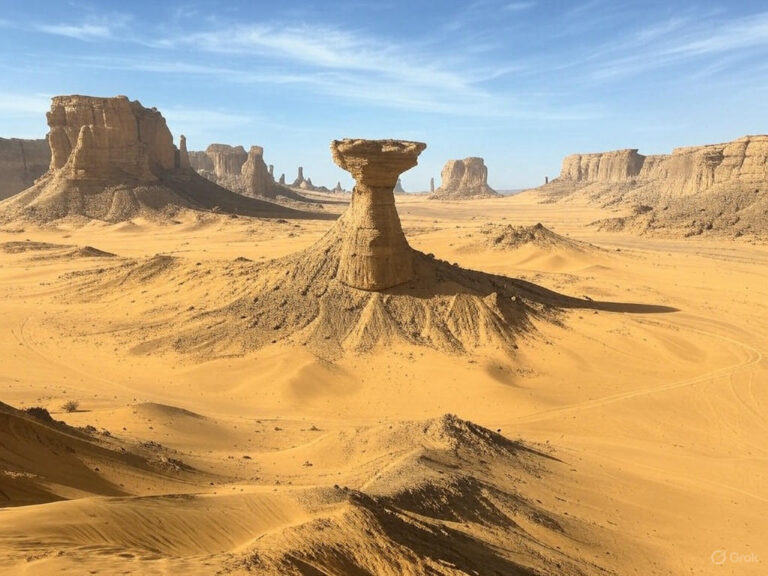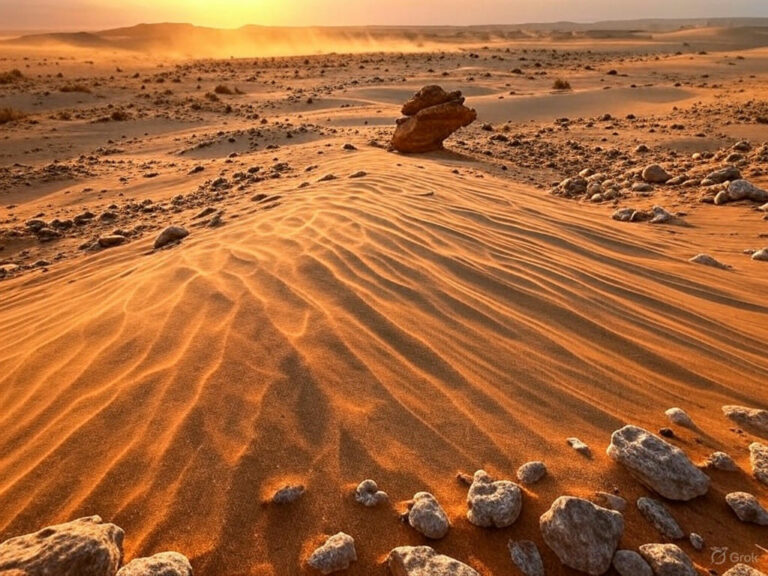Ocean Salinity
Suppose you’re drinking a glass of water, but instead of fresh water, it’s salty like seawater. Have you ever wondered why ocean water is salty and how this salinity impacts everything from ocean currents to cyclones? Let’s dive deep into this fascinating topic!
🧪 What is Salinity?
Salinity is the ratio of dissolved salts to the total weight of seawater, measured in parts per thousand (o/oo).
It plays a crucial role in shaping the physical and chemical properties of the ocean, influencing:
✔️ Temperature & Density – Saltier water is denser and affects ocean circulation.
✔️ Freezing & Boiling Points – Higher salinity lowers freezing points (why the ocean doesn’t freeze easily) and raises boiling points (why it takes longer to evaporate).
✔️ Marine Life – Different organisms thrive in specific salinity levels.
🔬 What Makes the Ocean Salty? (Major Salts in Seawater)
The ocean isn’t just full of random salts—six major salts dominate:
- Sodium Chloride (NaCl) → 77.8% (table salt, the primary component)
- Magnesium Chloride (MgCl₂) → 10.9%
- Magnesium Sulphate (MgSO₄) → 4.7%
- Calcium Sulphate (CaSO₄) → 3.6%
- Potassium Sulphate (K₂SO₄) → 2.5%
- Calcium Carbonate (CaCO₃) → 0.3%
🌍 Sources of Ocean Salinity
Where does all this salt come from? The primary source is land.
✔️ Rivers bring dissolved salts from rocks and soil into the ocean. However, the composition of river salt differs from ocean salt.
✔️ Calcium Sulphate dominates river water (60%), while Sodium Chloride dominates ocean water (77.8%). Why? Marine organisms absorb calcium for their shells and excrete sodium chloride, modifying ocean salinity over millions of years.
✔️ Volcanic eruptions also add minerals to seawater.
📊 Factors Controlling Salinity
Salinity is not constant everywhere. It varies due to several factors:
🔥 1. Evaporation & Precipitation
- High evaporation → Higher salinity (Tropics)
- High rainfall → Lower salinity (Equator & high latitudes)
💡 Surprising fact: Salinity is highest at the Tropics (not the Equator) because the Equator has more rainfall, diluting the salt content.
🌊 2. River Inflow & Ice Melt
- Large rivers dilute salinity near their mouths.
- Enclosed seas have lower salinity due to heavy freshwater input (e.g., Baltic Sea has lower salinity than the North Sea).
- Glacial melt in high latitudes reduces salinity in colder waters.
💨 3. Wind & Ocean Circulation
- Anticyclones (high pressure, stable air) increase salinity by reducing cloud cover & enhancing evaporation.
- Trade winds move high-salinity waters to lower-salinity areas, balancing ocean salinity.
- Warm currents (e.g., Gulf Stream) increase salinity, while cold currents (e.g., Labrador Current) reduce it.
💡 Example: The Bay of Bengal has more cyclones than the Arabian Sea because of lower salinity → lower boiling point → more evaporation → more storms!
🌊 Salinity Distribution: How It Varies
Salinity, which refers to the amount of dissolved salts in seawater, is generally measured in parts per thousand (o/oo). On average, the salinity of the oceans is 35 o/oo. However, this value is not uniform across all regions.
📍 Horizontal Distribution (Across the Ocean’s Surface)
- Salinity Trends from Equator to Poles
- You might assume that the equator, being the hottest region, has the highest salinity. But in reality, the highest salinity is found in the tropics, not at the equator.
- The equator receives heavy rainfall, which dilutes the seawater and lowers its salinity.
- In contrast, the tropics (around 20°–30° latitude) experience high evaporation and lower rainfall, leading to higher salinity.
- Moving towards the poles, salinity decreases due to melting ice caps and lower evaporation rates.
- Marginal Seas vs. Open Oceans
- If you compare coastal regions with the central parts of the ocean, you’ll notice that the marginal areas (near continents) have lower salinity.
- This happens because rivers continuously add freshwater to these areas, reducing salinity.
- For example, the Bay of Bengal has lower salinity than the Arabian Sea because many large rivers (like the Ganga and Brahmaputra) drain into it.
- Latitude Doesn’t Always Determine Salinity in Inland Seas
- In partially enclosed seas, factors like freshwater inflow from rivers or melting ice play a more dominant role than latitude.
- For instance, the Baltic Sea has lower salinity than the North Sea, even though they are at nearly the same latitude. This is because the Baltic Sea receives a higher influx of freshwater from rivers and melting ice.
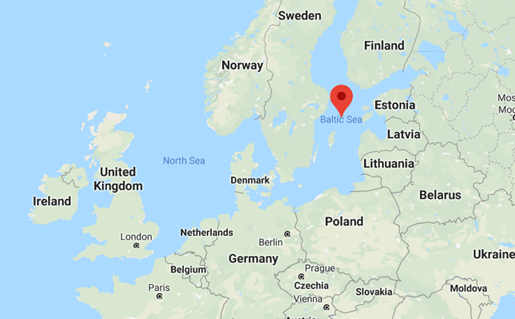
📏 Vertical Distribution (From Surface to Depths)
Just like temperature and pressure, salinity also varies with depth in the ocean. But this variation is not uniform across all latitudes.
- High Latitudes:
- In polar and subpolar regions, salinity increases with depth because surface water is diluted by melting ice, while deeper water retains its salinity.
- Equatorial Regions:
- At the equator, surface salinity is low due to heavy rainfall and freshwater influx.
- However, below the surface, salinity is higher due to the mixing of deeper ocean currents.
- General Pattern:
- On average, higher salinity is found in the upper layers of the ocean, and it decreases with depth.
- This creates a clear division: the upper zone of maximum salinity, the lower zone of minimum salinity, and in between, a special transition layer called the Halocline Zone.
- The Halocline is like a barrier separating different salinity levels, much like how thermoclines separate temperature layers in the ocean.
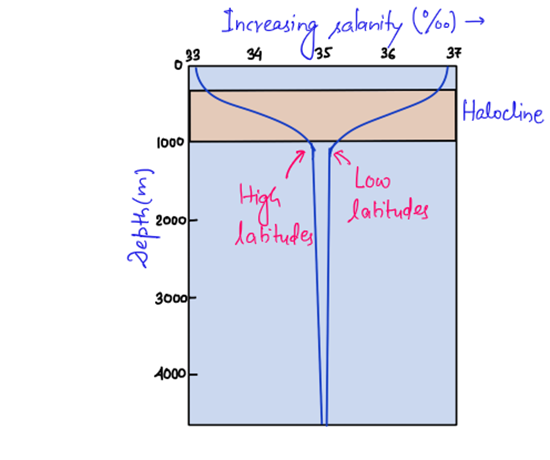
🌍 Why Salinity Matters?
1️⃣ Regulates Freezing & Boiling Points – More salt = slower freezing & higher boiling point.
2️⃣ Controls Density – Saltier water is heavier, driving ocean currents.
3️⃣ Influences Climate & Weather – High salinity affects evaporation & rainfall.
4️⃣ Essential for Marine Life – Corals, fish, and plants depend on stable salinity levels.
5️⃣ Cyclones & Monsoons – Regions with lower salinity see more evaporation & stronger storms (Bay of Bengal).
🎯 Final Thought
Ocean salinity is not just about why the sea tastes salty—it plays a crucial role in weather patterns, ocean currents, and marine ecosystems. Without it, our planet’s climate and biodiversity would be drastically different! 🌎💙


